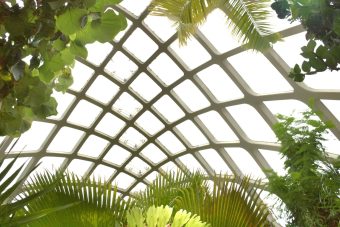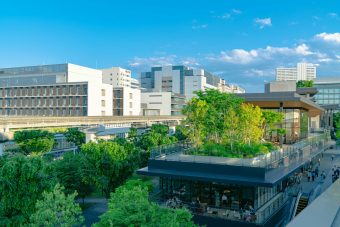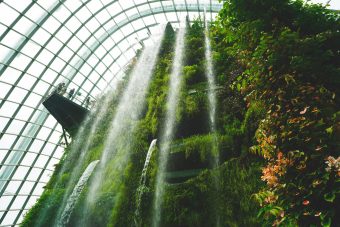
Back in 2017, the United Nations Global Status Report revealed the fact that large-scale pollution came from buildings and the construction sector, supporting it with concrete data. As stated, 36 per cent of global energy use and 39 per cent of energy-related carbon dioxide emissions came from these two sources alone. Although the COVID pandemic led to a drastic reduction in demand in this sector, in 2021, construction activities almost completely recovered. Building on some recent information, last year’s United Nations SUSTAINABLE ARCHITECTURE PRINCIPLES THROUGHOUT HISTORY AND TODAY Climate Change Conference (COP28) launched the so-called Building Breakthrough as a global initiative for a sustainable building sector to be implemented by 2030. On the occasion, 27 countries pledged their commitment to achieving the set goals and it is these countries that make up over 30 per cent of the world’s population and contribute about 50 per cent to global greenhouse gas emissions.
All of the aforementioned points to the need for an increasing implementation of sustainable architecture principles and solutions when designing and constructing buildings, to reduce negative environmental effects. This implies that architecture is no longer focused exclusively on the aesthetic appearance of buildings, but also includes environmental and social benefits. Although the term is very broad, some of its most important factors can be singled out.
IN FOCUS:
- COOPERATION BETWEEN SCIECE AND BUSINESS FOR A SUSTAINABLE FUTURE
- SOLVING PROBLEMS WITH HIGHER HARMONICS
- BIG SOLAR USES AN ENVIRONMENTALLY FRIENDLY METHOD TO CLEAN AND MAINTAIN SOLAR PANELS
The use of sustainable materials refers to those materials whose production causes less pollution to the environment, recycled materials or which can be recycled at a later date, materials produced from renewable resources, as well as those supplied by local environments. For instance, one of the biggest polluters in terms of polluting emissions in the construction industry is cement, which is an integral part of concrete. Therefore, scientists have been working on finding alternative solutions to produce more sustainable concrete, omitting the use of cement. Some of the solutions are the production of concrete based on algae, hemp, lime or for example, the use of coal ash, which reduces the required quantity of cement. Increasingly, industrial hemp is used in construction, which, among other things, is a very good insulator. Some other renewable materials used in construction are bamboo and cork.

Waste reduction is linked to the previous paragraph. This includes minimizing construction waste, which is facilitated if the material is recyclable. Furthermore, buildings can also have a recycling and composting system.
Energy-efficient buildings imply good insulation, efficient electrical devices and lighting systems, good natural ventilation, use of natural light, installation of solar panels and others. Building shading devices prevent too much sunlight in summer, while in winter it serves as additional insulation. We should also highlight quality doors and windows. One of the good solutions is windows that darken automatically depending on the amount of light. Of course, the material used to build walls itself is also very important, so one can use stone that absorbs and stores the sun’s heat and then releases it when needed. The importance of natural insulation, i.e. green areas that are made up of trees alone, but also interesting solutions such as green walls, should be mentioned too. A building can be more energy efficient if its position in relation to the sun is taken into account during the design.

Water conservation involves several very useful systems. The first of them is the rainwater collection system, which allows the water collected in this way to be used later, for example, for irrigation or flushing toilets. Grey water systems collect wastewater from taps, showers, washing machines and dishes and with special treatment it can be reused for specific purposes. There are also efficient irrigation systems as well as low-flow systems. We should also mention green roofs, where vegetation can be grown, and which use rainwater for watering.
Sustainable transport means promoting electromobility through provided charging points. Additionally, garages should also include a safe place where alternative means of transportation such as bicycles or scooters can be stored. In Serbia, for example, recent amendments to the Law on Spatial Planning and Construction prescribe that in residential buildings every fourth parking space must have an electric charger, while for commercial buildings it is every third parking space.
A carefully chosen location requires that a building is constructed in a way that does not jeopardize the existing nature. For instance, if there are trees in a certain area in the city, the project should minimize cutting them down to make room for construction. If the project is planned outside urban areas, say on a mountain, it is important to take into account the biodiversity of that area so that their natural habitat is not threatened.
Prepared by: Katarina Vuinac
Read the story in the new issue of the Energy portal Magazine SUSTAINABLE ARCHITECTURE AND FINANCING OF GREEN CONSTRUCTION

